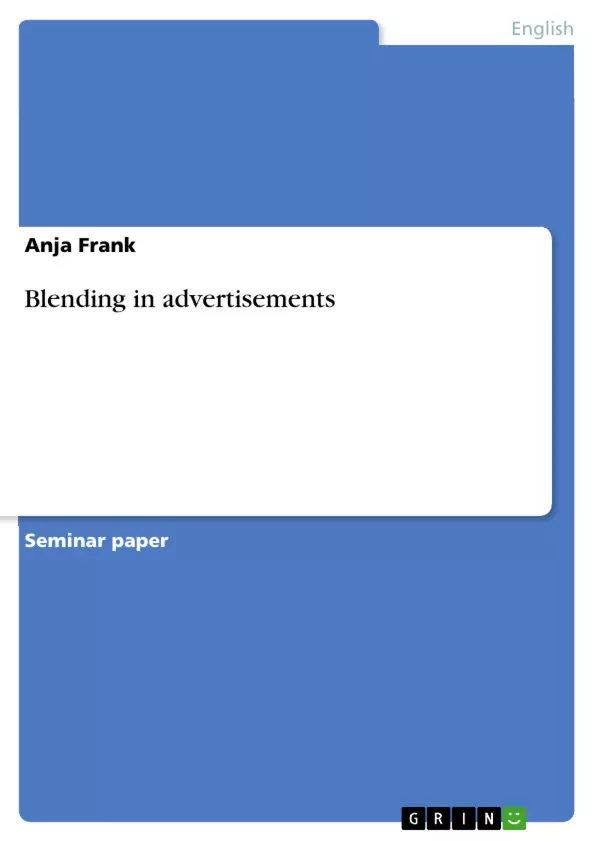That humans try to understand their environment by studying the available information is common knowledge, but how these processes of analyzing and understanding function within our brain is still a field that has not been entirely investigated, yet. Within the last years the interest of cognitive processes has grown enormously and has led to a whole new field of research. Inside this research field of cognitive grammar the theory of conceptual blending is the most interesting one for me.
In my opinion, blending is an elegant way for creative processes. It illustrates the strong relationship between language and cognition. Furthermore, blends are an effective way to spread a message and to attract attention and curiosity towards an idea or a product. Examples of blends can be found in many sorts of situations, for instance, in cartoons, jokes, poetry or advertisements and there are many more situations which demonstrate the ubiquity of conceptual blending. Within this term paper, however, I want to concentrate on the field of advertisements. I will shortly present important information on conceptual blending and analyze two different ads according to the CB Theory developed by Gilles Fauconnier and Mark Turner.
While studying and reading books about the topic I realized the crucial role of the recipients. Therefore, I started a survey with four test persons, wondering if all were able to decode the messages. I was also interested in their reaction towards the advertisements. I believe that this information is important when considering the effectiveness of the advertisements. That is why I have included their views and opinions below each analysis.
Inhaltsverzeichnis (Table of Contents)
- Introduction
- Conceptual Blending
- Examples
- Starbucks Coffee
- Australia Post
- Conclusion
- References
- Appendix
Zielsetzung und Themenschwerpunkte (Objectives and Key Themes)
This paper explores the theory of conceptual blending as a cognitive process for understanding and interpreting information. The author focuses specifically on the application of conceptual blending within the realm of advertising. The paper aims to demonstrate the effectiveness of blending in conveying messages and attracting attention, using two advertisements as examples.
- Conceptual blending as a cognitive process
- Blending in advertising
- Effectiveness of blending in conveying messages
- Analysis of two advertisements
- The role of the recipient in interpreting blends
Zusammenfassung der Kapitel (Chapter Summaries)
The introduction presents the concept of conceptual blending and highlights its relevance to understanding cognitive processes. The paper emphasizes the potential of blending in creative processes and its ability to influence perception and attract attention.
The chapter on conceptual blending provides a detailed explanation of the theory, including its basic principles and key components. The author introduces the concept of mental spaces and elaborates on the process of blending, outlining its steps and potential modifications.
The chapter on examples presents two specific advertisements, Starbucks coffee and Australia Post, and analyzes them using the principles of conceptual blending.
Schlüsselwörter (Keywords)
The key concepts explored in this paper include conceptual blending, cognitive processes, mental spaces, advertising, message conveyance, attention, and recipient interpretation.
- Arbeit zitieren
- Anja Frank (Autor:in), 2008, Blending in advertisements, München, GRIN Verlag, https://www.grin.com/document/112751



